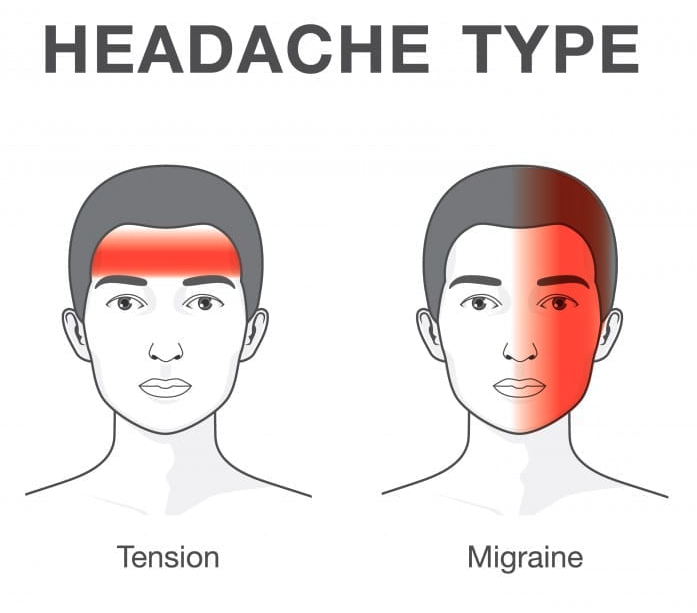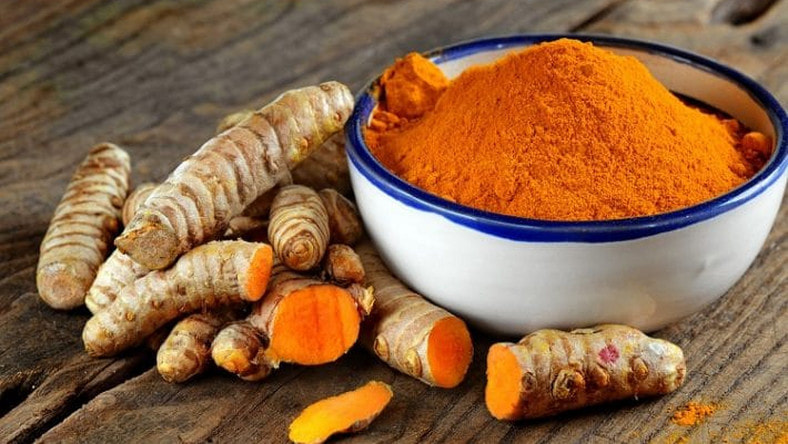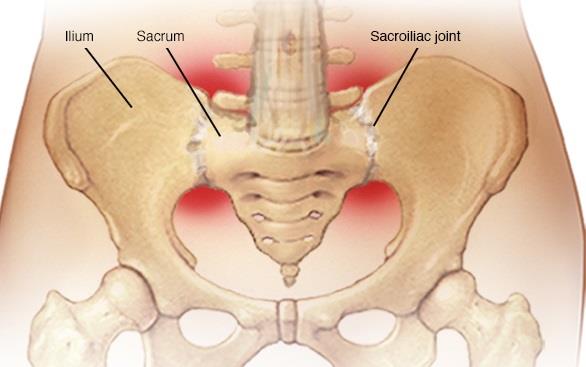|
28/11/2019 1 Comment Christmas Toy & Food AppealJoin us in giving back to the community by once again supporting Anglicare Victoria in their annual Christmas Toy and Food Appeal.
The generosity of your donations will help to bring some festive cheer to local families in need and brighten and touch the hearts of so many! You are invited to place new toys and non-perishable food items under our clinic Christmas tree. All gifts are to be brand new and unwrapped. Food items are to be non-perishable. Please don’t forget to consider gifts or gift vouchers for teenagers.
1 Comment
6/11/2019 1 Comment What type of headache do I have?Headaches are one of the most common health problems that heath professionals treat, but did you know the diagnosis can differ from one person to the next?Headaches can be painful, irritating, and debilitating. Sometimes, you can make it through the day without a problem, but other times you have to crawl into bed and block out the world.
There are many different kinds and causes of headaches, two of the most common are tension headaches and migraines. Both can range from mild to severe, and can be experienced on one or both sides of the head; however there are some differences that can help determine which kind of headache you have. Tension headaches Tension headaches are the most common and can make you feel like your head is tight or under pressure; they don’t usually get worse with exertion. The pain may be associated with tenderness of the muscles of the head, neck, and shoulders, and can last for a few hours, or even up to a week. Migraines Migraines are usually described as a throbbing sensation, and physical exertion can make the pain worse. The throbbing is believed to be related to blood flow changes in the brain causing irritation and swelling of the blood vessels. Unlike tension headaches, migraines can cause nausea, vomiting and sensitivity to light, smell, and sound. Migraines can be with or without aura; a migraine aura can be any of a collection of neurological symptoms such as numbness, speaking difficulties, vision changes, and tingling, which signal the onset of a migraine. What causes headaches? Tension or stress is more likely to cause a tension headache, but there are many triggers for migraines. Certain foods, smells, weather changes, hormones, and a lack of sleep can all cause them. Diagnosis and treatment There are no migraine-specific tests, but your Chiropractor may run tests to rule out other conditions. It can be helpful to monitor your headache activity by noting your diet, events, symptoms and medication, before and during your headache. Determining the cause of your headaches or migraines may involve a process of elimination. Sometimes, it can be as simple as cutting out an ingredient from your diet. While there is no overall cure, doctors will often recommend medication or therapeutic intervention. If you are suffering from severe, ongoing headaches, or are experiencing head pain with unusual symptoms and a high fever, see your Chiropractor. They can rule out underlying conditions before helping you to manage the pain. 6/11/2019 36 Comments Running from lower back painExercise, such as running, can help you keep fit and active, but what if it’s painful?Running is a popular form of exercise for many people who want to keep fit, but it involves repetitive impact on the joints which can cause back pain, especially in the lower back. If you already suffer from lower back pain, running may make it worse, or lead to other types of pain, such as sciatica (leg pain, weakness and numbness).
Muscle strain One of the more common types of pain from running is a muscular strain, which can appear as a spasm or ache in your lower back. This type of pain doesn’t travel into the legs or buttocks. Resting, heat or cold therapy, and stretching are some self-care measures that may help relieve muscle strain. If the pain is not alleviated by these measures after two to three weeks, there may be a more serious problem. Disc problems Sometimes, back pain can be a sign of a spinal problem, such as degenerative disc disease (DDD), or a herniated disc. Your discs are your lower back’s ‘shock absorbers’; over time, running can cause a high level of stress on these, which can make existing or developing back problems worse. DDD occurs when the disc gradually loses that shock absorbing quality due to wear-and-tear, or injury. A herniated disc is one that has begun to bulge or rupture, which puts pressure on the surrounding nerves. If you notice that you have ongoing lower back pain after a run, whether it’s muscular or structural, check with a health professional to help diagnose any problems and provide the correct treatment. Running injuries should be treated early before they worsen. After diagnosis and treatment is in place, some preventative measures may help alleviate pain and discomfort in your legs and lower back: • Warm up before a run • Stretch your hamstrings • Wear comfortable and supportive running shoes • Avoid running on hard surfaces such as concrete • Incorporate muscle toning, strength training and cross-training See your chiropractor for advice and treatment on how to get you back on track and enjoying your run with minimal, or no pain. Picture from Pinterest 6/11/2019 0 Comments Turmeric: the spice of lifeThis colourful spice adds flavour and colour to your meals, but what else could turmeric do for you?Turmeric has long been considered one of the most beneficial foods in the world, and now shows promising results from many high-quality studies on its health benefits. The roots of the turmeric plant are used fresh, or dried and ground into a powder; both forms have been used in Asia as a medicine and a spice for thousands of years.
One of the compounds that make turmeric so nutritious, and also gives it the orange- yellow colour, is curcumin. Curcumin boasts anti-inflammatory and antioxidant effects, improves brain function, shows promise in cancer prevention, and much more. Anti-inflammatory compound Inflammation is an essential function that helps your body repair damage and fight bacteria. However extensive or chronic inflammation can cause serious health problems. It’s believed that chronic inflammation may contribute to some illnesses, such as cancer, heart disease, stroke, diabetes, arthritis, and Alzheimer’s. Curcumin is powerful in fighting chronic inflammation. Studies show that it can match the effectiveness of some anti- inflammatory drugs. Brain and heart health Curcumin can increase the levels of growth hormone in your brain, helping your neurons form new connections. This shows promise for improved learning and memory, and in the prevention of depression. Curcumin can play a part in heart health by improving the lining of the blood vessels which helps regulate blood pressure, clotting, and inflammation. Antioxidant benefits We often hear about antioxidants, but what exactly are they? Antioxidants are molecules in our bodies that fight damage caused by unstable molecules (known as free radicals). We need a balance of free radicals and antioxidants. When this balance is disrupted, our health can suffer. Curcumin is an exceptionally powerful antioxidant that neutralises free radicals to slow down the aging process, and prevent disease. Cancer treatment prospects Intensive studies have shown that curcumin can help reduce the growth of malignant cells in some forms of cancer. Research is in its infancy, but the results are promising. To reap the health benefits, it’s important to know that it’s not as easy as stocking up on the spice, or heading out for a turmeric latte. The curcumin content in turmeric is a mere three percent, and is also difficult for your body to absorb, so curcumin supplements may be the most effective approach. Not all curcumin supplements are created equal though, and more evidence on the reported benefits is needed. Some contain other ingredients such as piperine (a compound in black pepper), which can help aid absorption by up to 2,000 percent. Consuming curcumin with a fatty meal could also help, as it is fat soluble. There’s no denying that turmeric is a delicious and healthy addition to your diet, but too much can sometimes cause stomach irritation, so remember, everything in moderation. Talk to your Chiropractor about whether curcumin supplements would be suitable for you. Picture from Pinterest 6/11/2019 0 Comments What is Sacroiliitis?If you suffer from pain in your lower back, hips, buttocks, and legs, could sacroiliitis be the cause?Sacroiliitis is inflammation of the sacroiliac joint, which can affect one or both joints. The sacroiliac joints are at the lower part of your spine where it connects to your pelvic area near your hips.
In general the symptoms of sacroiliitis include pain in the lower back, hips, buttocks, legs, knees, and less commonly, feet. Sometimes that pain is accompanied by a mild fever. You may also notice the pain worsening after long periods of standing or putting more weight on one leg than the other, climbing stairs, and taking long strides when running or walking. There is no single reason why people suffer from sacroiliitis, and it can affect anyone. However, it’s quite common in pregnant women because the body is preparing for a baby, and the hip and sacroiliac joints naturally loosen. Pregnancy can alter the way you walk and cause inflammation, which leads to the condition. Aside from pregnancy, it can also be caused from gout, joint damage from a fall or accident, or an inflamed sacroiliac joint. Existing back and spine issues, osteoarthritis and ankylosing spondylitis (an inflammatory form of arthritis), can also cause sacroiliitis. Sacroiliitis shares traits with many other lower back pain issues, so it’s advisable to consult your health professional for a correct diagnosis. Once you receive a definite diagnosis for the condition, your treatment type can be determined. Your Chiropractor may also recommend measures to manage your symptoms such as correcting your posture, stretching to maintain joint flexibility, and strengthening exercises to make your muscles more stable. As anyone with lower back pain will know, it can take time to find the best sleeping position. But is the one you found comfortable and beneficial?Not every sleeping position can help relieve back pain, even if it’s the best way for you to fall asleep. A poor sleeping position can aggravate, or even cause lower back pain. The position you choose should maintain the natural curvature of your spine without pressure on your neck, hips, or back.
One of the best ways to sleep is on your back, as this distributes your body weight evenly; and ensures alignment of your head, neck and spine. However, not everyone finds this position comfortable; for additional support place a small pillow under your knees, and fill the gaps between your body and mattress with thin pillows. If you’re a side sleeper, take care, as sleeping on your side can strain your lower back. To minimise strain and keep your head, shoulders and hips correctly aligned, try sleeping with a firm pillow between your knees, and one to support your head and neck. If you have a herniated disc, then a curled foetal position may provide relief. Lie on your side with your knees tucked into your chest and your back straight. Support your head and neck with a pillow, and place a firm pillow between your knees. Sleeping on your front is one of the worst positions, but may benefit people with degenerative disc disease or a herniated disc. Place a thin pillow under your stomach and hips to raise your mid-section and help spinal alignment. You can sleep with your head on a flat pillow, or none at all, but make sure your head isn’t turned to the side, as this can twist the spine. Your sleeping position, mattress, and pillows all need to work in harmony so that you can sleep comfortably with lower back pain. If you are experiencing pain and discomfort and need advice, speak with our team at Adam's Back. Picture from Pinterest |
AuthorAdam's Back is a team of dedicated complimentary health professionals. Our aim is to support you in finding drug-free solutions for better health. Archives
July 2024
Categories |
Search by typing & pressing enter







 RSS Feed
RSS Feed